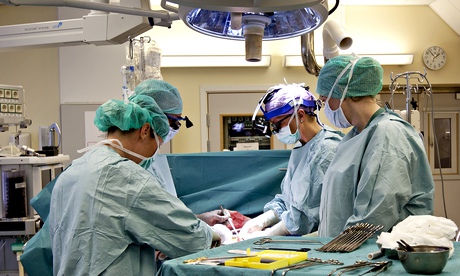
Four of nine women given pioneering womb transplants in Sweden have now also had embryos transferred, the pioneering Swedish doctor treating them has said.
Dr Mats Brannstrom, professor of obstetrics and gynaecology at Gothenburg University, said his team had embarked on a programme of embryo transfer for the women, who were either born without a womb or lost it as a result of cancer. All have ovaries so were able to produce eggs that were fertilised using IVF.
Brannstrom predicted that three or four of the nine women might succeed in giving birth, which would be a world first. Other womb transplants have taken place in Saudi Arabia and Turkey but no recipients have yet managed to have a child. A pregnancy was achieved in Turkey, but it failed after two months.
"We have already begun transferring embryos into four of the women and plan to make attempts with the others when they are ready," said Brannstrom. He would not say whether any of the women were pregnant at the moment. In a study published last week, the team said that there were "mild rejection episodes" in four women who received donated wombs. Two patients had to have the uterus removed because of complications.
Brannstrom's technique is controversial because he is accepting wombs donated by living women, who are relatives or friends of his patients. Elsewhere, wombs from dead donors have been used.
Dr Richard Smith, head of the UK charity Womb Transplant UK, which is trying to raise money to carry out transplants here, has said that large chunks of blood vessels had to be removed from the donor as well as the uterus itself, raising the risks of the operation for the donor. In the UK, there would be ethical questions because the operation is not a life-saving procedure, he said.
The women will have to take drugs throughout their pregnancy to ensure their body does not reject the organ. They will also have to be watched carefully for how the womb progresses throughout pregnancy.
Dr Charles Kingsland, a spokesman for Britain's Royal College of Obstetricians and Gynaecologists, said: "There are questions about how the physiological changes in the uterus will affect the mother and whether the transplanted uterus will be conducive to a growing baby."
Brannstrom said the transplanted wombs would be removed after a maximum of two pregnancies.

